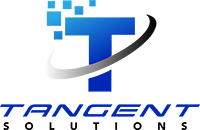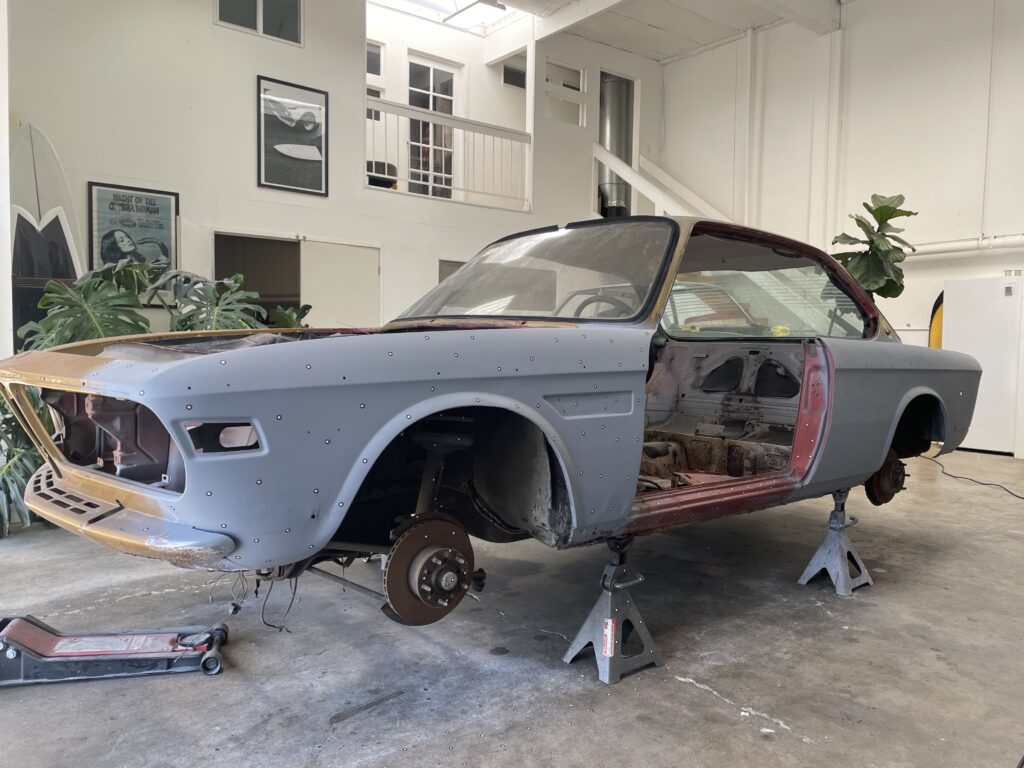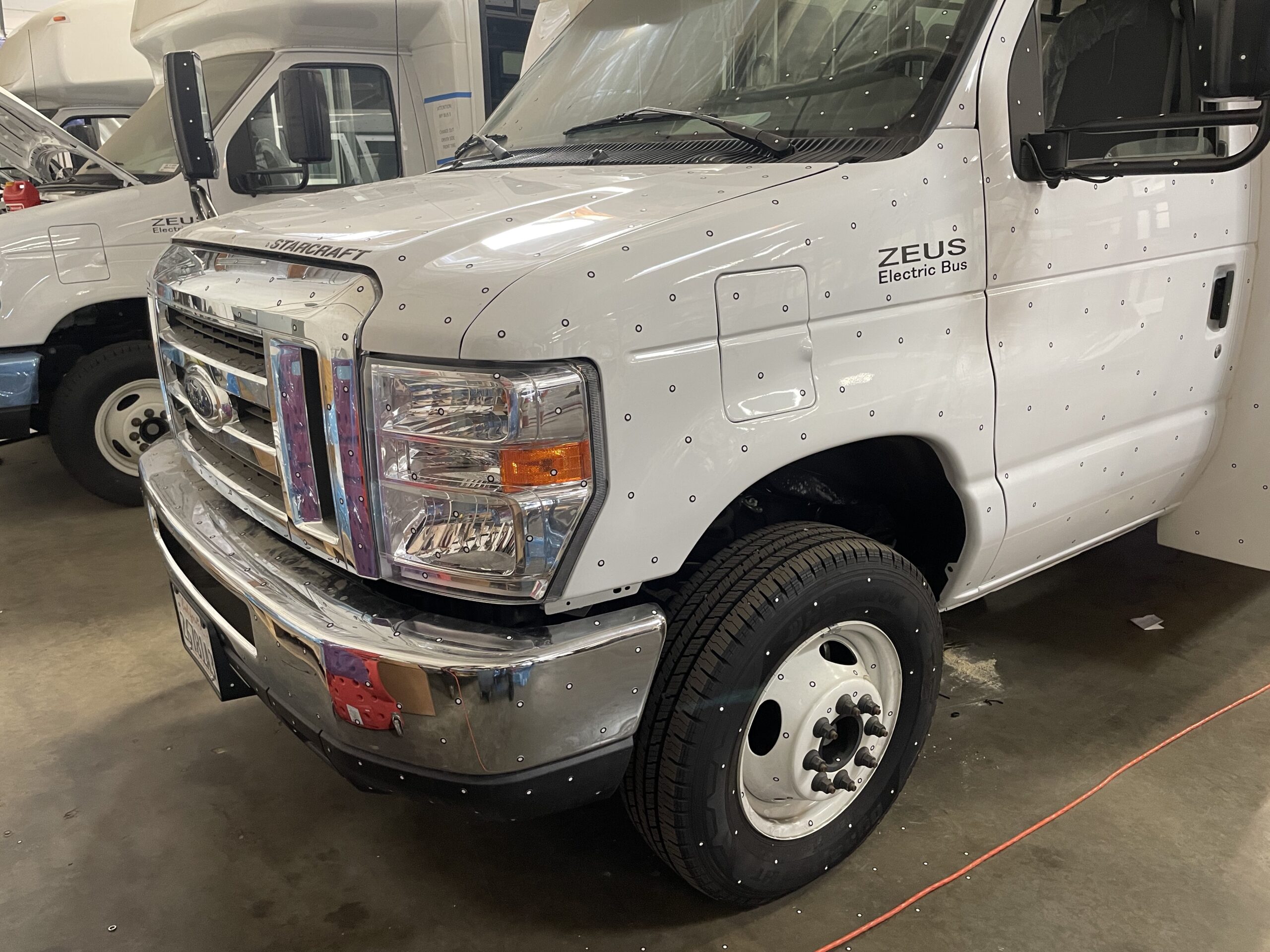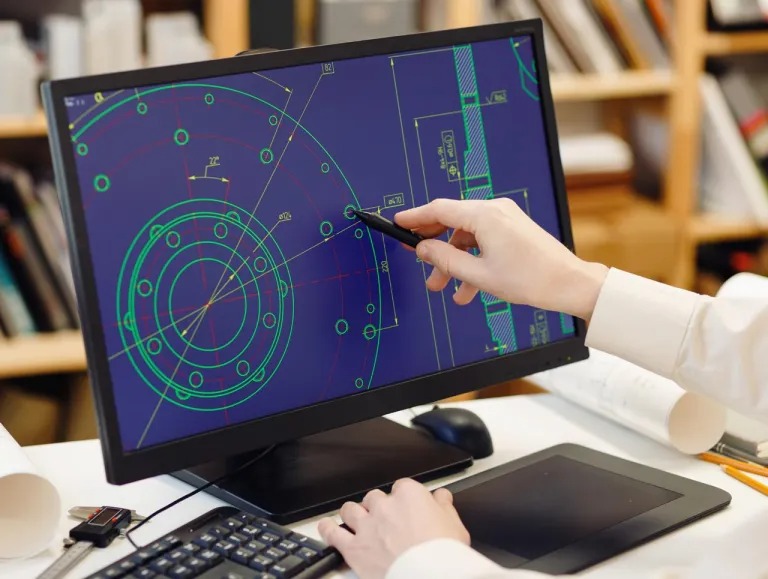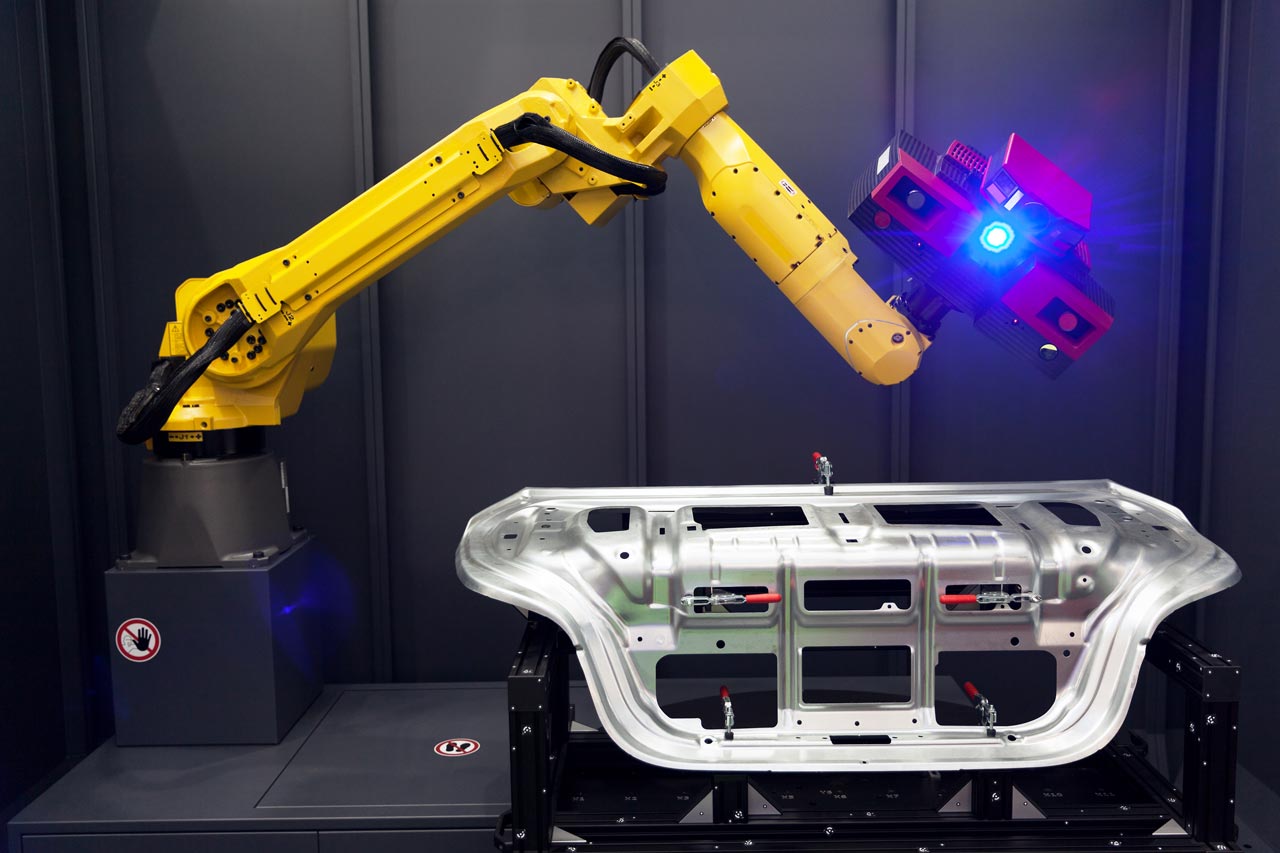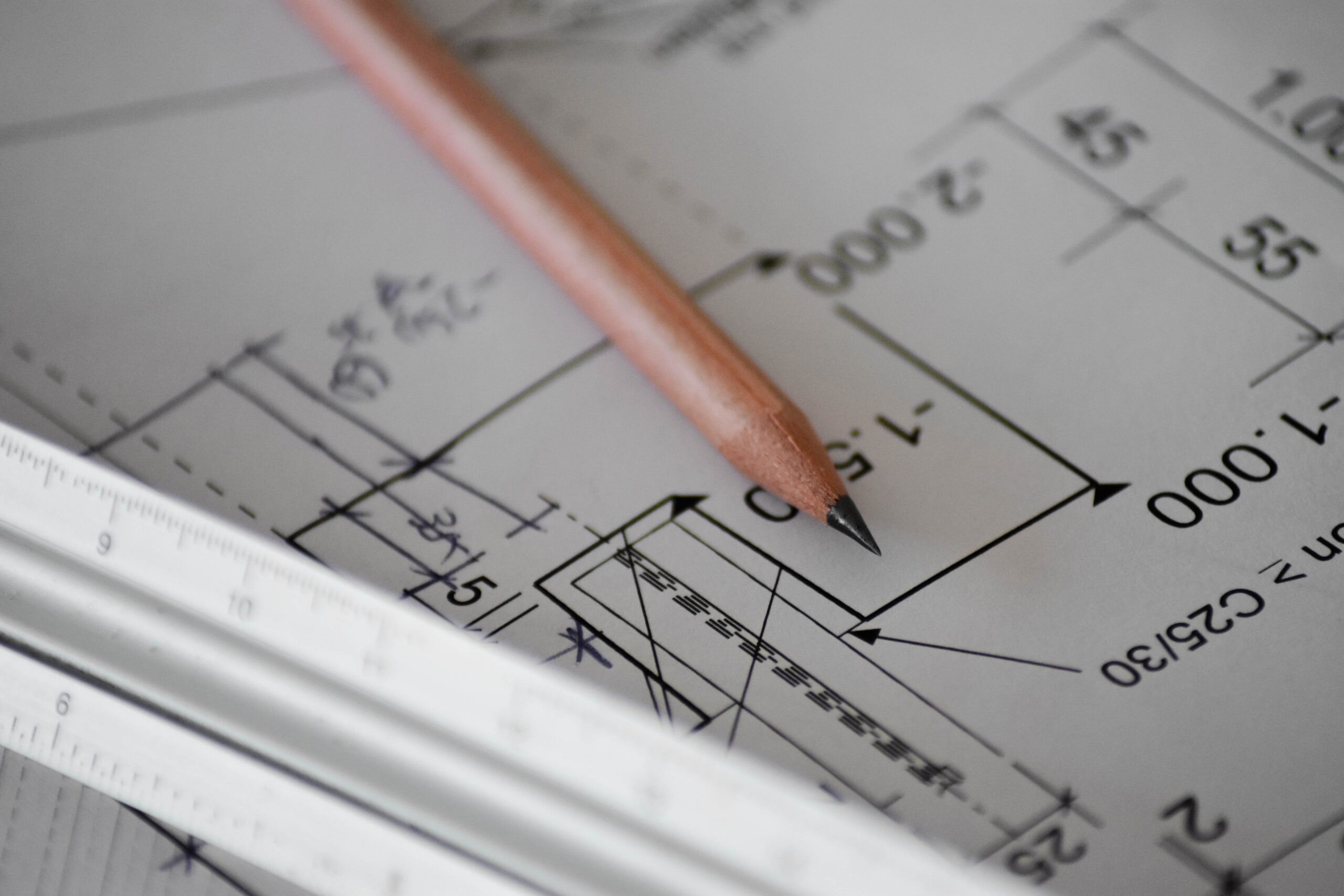The automotive industry has seen significant advancements in recent years, especially when it comes to the integration of 3D laser scanning for automotive engineering.
This technology is one of the most notable innovations that has revolutionized the automotive industry.
Laser scanning technology has transformed the way cars are designed, engineered, and manufactured. In this article, we’ll delve into the applications and benefits of 3D laser scanning for automotive.
What is 3D Laser Scanning?
3D laser scanning is a non-contact measurement technology that captures three-dimensional data of an object or environment. It works by projecting a laser beam onto the object, which bounces back to a scanner, creating a point cloud that represents the object’s surface. The scanner then processes this data to create a 3D model of the object. 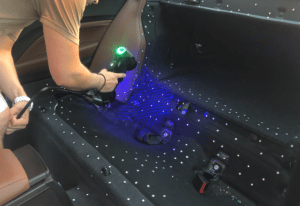
3D models, commonly in computer-aided design models, CAD, are needed for almost all manufacturing processes. These files are ultra precise and are used to build a program around a project in order to create it through whichever manufacturing system.
3D laser scanning is used in various industries, including automotive, aerospace, construction, and medical fields.
In the automotive industry, 3D laser scanning for automotive is used for design, engineering, and quality control applications.
Applications of 3D Laser Scanning in Automotive
Design and Engineering
In the automotive industry, 3D laser scanning is used to capture the geometry of cars and their components. The data obtained from 3D laser scanning can be used to create precise 3D CAD models of the car or its components. 
These models can be used in the design and engineering process to ensure that the components fit correctly, and the car meets the required specifications.
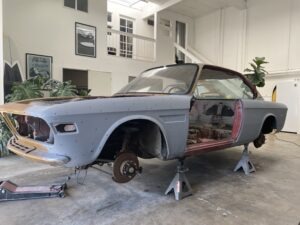
The range of projects using 3D laser scanning in automotive engineering includes OEM replacement, custom designs, suspension components, motor modifications, and more.
3D laser scanning is particularly useful in the design of car interiors. It enables designers to create custom interiors that fit perfectly with the car’s shape and size.
With 3D laser scanning in automotive interiors, designers can also create ergonomic designs that improve the car’s comfort and usability. 3D scans eliminate errors in measurement, which are timely and costly.
Quality Control
3D laser scanning is also used in the automotive industry for quality control purposes. It allows manufacturers to inspect car components for defects and ensure that they meet the required specifications.
By scanning car components, manufacturers can identify any deviations from the design and correct them before they become a problem.
Scan data can be compared to original CAD files to determine the deviation.
For example, 3D laser scanning can be used to inspect car body panels for defects such as dents, scratches, or misalignments. By comparing the scanned data to the original design, manufacturers can identify any deviations and take corrective action.
How to Use 3D Laser Scanning for Quality Control
Reverse Engineering
Reverse engineering is the process of creating a 3D model of an object from an existing part or component.
3D laser scanning is used in reverse engineering to create accurate 3D models of car components that can be used for repair or replacement purposes.
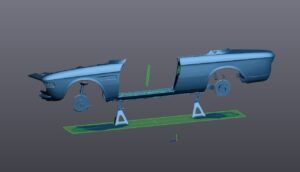
For example, if a car part is damaged, lost, or does not exist in CAD, and needs to be replaced, 3D laser scanning can be used to create a 3D model of the part.
This model is then used to create a replacement part that fits perfectly with the car’s other components.
Benefits of 3D Laser Scanning for Automotive
Accuracy
One of the most significant benefits of 3D laser scanning for automotive is its accuracy. 3D laser scanning captures precise measurements of car components, enabling manufacturers to create components that fit perfectly with the car’s design.
This level of accuracy is particularly useful in the manufacturing of suspension components, where even small deviations from the design can result in significant problems.
The most precise 3D laser scanners provide precision up to the thousandth of a millimeter.
Speed
3D laser scanning is also a time-saving technology. Traditional methods of measuring car components are often time-consuming and require a lot of manual work. 3D laser scanning for automotive, on the other hand, is a quick and automated process that can capture measurements in a matter of minutes.
The scanning process generates a model in real time and can visualize detail that is unseen to the human eye.
This speed allows manufacturers to complete design and engineering projects quickly, saving time and money.
Cost-Effective
3D laser scanning is also a cost-effective technology. Traditional methods of measuring car components often require the use of expensive equipment and materials.
3D laser scanning, on the other hand, requires minimal equipment and materials, reducing the cost of measuring and designing car components.
In automotive applications, 3D laser scanning allows for designers to 3D print prototypes. These prototypes help validate fitment or design of a component quickly and without investing into a costly manufacturing process.
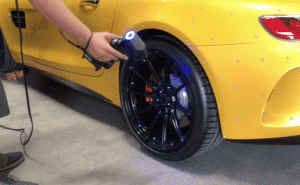
Additionally, 3D laser scanning allows for faster and more accurate measurements, reducing the time and resources required for design and production.
Overall, the cost-effectiveness of 3D laser scanning makes it a valuable tool for automotive manufacturers looking to improve their bottom line while maintaining the highest standards of quality and precision.
Increased Efficiency
3D laser scanning also increases efficiency in the automotive industry.
By providing accurate and detailed measurements, manufacturers can create components that fit precisely with the car’s design, reducing the need for adjustments and rework.
This not only saves time but also reduces the amount of material waste, leading to cost savings.
Improved Safety
3D scanning also plays a crucial role in ensuring safety in the automotive industry. By accurately measuring car components, manufacturers can ensure that each component is precisely designed and manufactured to meet safety standards.
This helps to minimize the risk of accidents and injuries caused by faulty components.
Competitive Advantage
Providing competitive advantage, automotive manufacturers use this technology to create products that meet the highest standards of quality and precision. This gives them an edge over their competitors.
Moreover, the speed and efficiency of 3D laser scanning allow manufacturers to bring new products to market faster, enabling them to stay ahead of the competition.
As new models and technology is rolled out, being first to market is essential for exploding success.
Applications of 3D Laser Scanning for Automotive Manufacturing
Automotive manufacturing is a complex and highly competitive industry. 3D laser scanning has numerous applications in this industry, including:
Tooling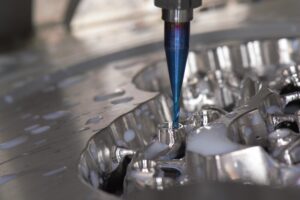
3D laser scanning can be used in the production of tooling for automotive manufacturing. It allows manufacturers to create precise molds and tooling that fit perfectly with the car’s design.
By reducing the risk of defects, it ensures that the car’s components fit precisely, improving the quality of the final product.
Quality Control
3D laser scanning allows manufacturers to inspect car components for defects and ensure that they meet the required specifications.
By scanning car components, manufacturers can identify any deviations from the design and take corrective action before the final product is produced.
Reverse Engineering
Reverse engineering is an essential application of 3D laser scanning for automotive manufacturing. It allows manufacturers to create precise 3D models of car components for manufacturing, redesign, or cataloging legacy parts.
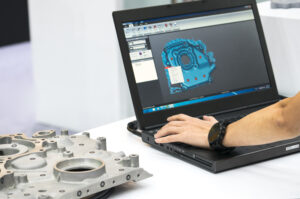
The process of reverse engineering in 3D scanning, post processing, and redrawing to a CAD file. These files allow design engineers to build entire vehicle assemblies in CAD computer software before coming to market.
5 Advantages of 3D Laser Scanning for Reverse Engineering
Prototyping
3D laser scanning is also used in prototyping. Manufacturers can create precise 3D prints of car components that can be used to test the design and functionality of the component before it is produced.
3D scans can be converted to 3D print files in just a couple of hours, helping to identify any design flaws early in the production process, reducing the risk of costly mistakes later on.
Conclusion
In conclusion, 3D laser scanning has revolutionized the automotive industry by enabling manufacturers to create precise and accurate designs and components.
This technology has numerous applications in the design, engineering, and manufacturing of cars, and its benefits include accuracy, speed, cost-effectiveness, increased efficiency, improved safety, and competitive advantage.
As the automotive industry continues to evolve, 3D laser scanning will undoubtedly play an increasingly important role in the design, engineering, and manufacturing of cars.
